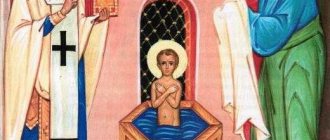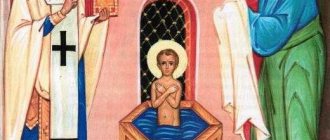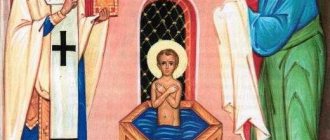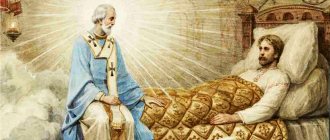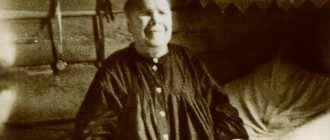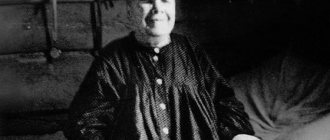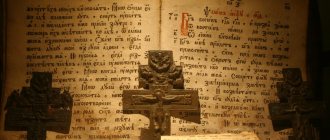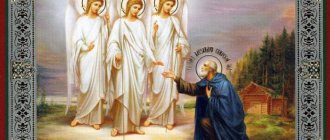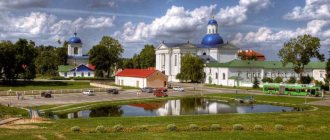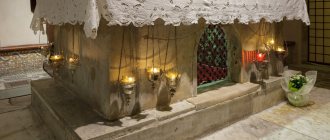- Reports and messages
- People
- Wonderworker Nicholas
New Year is a time of miracles, fairy tales and gifts.
Most people on the planet celebrate this holiday and look forward to its arrival. But there is another holiday that is more joyful for children than for adults - this is St. Nicholas Day. This holiday is celebrated annually on December 19, in memory of St. Nicholas the Wonderworker, the patron saint of children. Who lived at the beginning of our era and helped people. He grew up in a wealthy family, so he was able to receive a proper education and from childhood he studied religion. Days and nights he read the Holy Letter and prayed, and therefore God rewarded him with great strength and a kind heart. When his parents died, he distributed all his inheritance to the poor and needy. One of them turned out to be three young girls, whose father did not have enough money to raise their dowry, so they faced a humiliating and terrible fate, since their father wanted to make money from their beauty. Having learned this, Nicholas the Wonderworker decided to help the girls, and on a dark night he threw a bundle of gold into the house through the window. Having found him in the morning, the girls’ father was glad that now, finally, he would be able to marry off his eldest daughter. The same thing happened with the middle daughter, when it was the youngest daughter’s turn to get married, the father already knew that the stranger would bring gifts again, and decided to waylay him. And when at night St. Nicholas the Wonderworker again approached their house and threw gold out the window, his father ran after him to thank him. But Nicholas the Wonderworker asked him so that no one would know about it.
Nicholas is also the patron saint of all sailors and travelers, since during his lifetime he many times saved people who found themselves far from home. During his life, Saint Nicholas endured much torment and persecution. He suffered with all his soul and fought for Christianity and those who profess it. Therefore, he had to go through a lot, but despite this, until the end of his life he followed the path destined for him and never doubted the righteousness of his cause. That is why we honor his memory. It is like a symbol of Christianity and invincible faith.
As for the holiday, there is another belief. Since Nicholas the Wonderworker is the patron saint of children, on the night of December 18-19 he delivers gifts to all children. Obedient children receive nice gifts, but those children who behaved badly do not receive gifts. But this version is younger, and most likely, it was already invented by parents to keep their children obedient. But be that as it may, Nicholas the Wonderworker loves all children without exception, and it is to him that children, as well as sailors and travelers, turn their prayers. Nikolai protects those who cannot protect and stand up for themselves; he helps the disadvantaged and humiliated. Therefore, for some time he was even considered one of the Holy Trinity.
Nowadays, his remains are in several places, and people come to them on pilgrimage from all over the world.
4th grade
Half-length image of St. Nicholas
In the Orthodox tradition, the iconography of St. Nicholas is subject to strictly established canons, allowing only a few possible spelling options. The most common among them is the half-length image, in which the saint’s right hand is raised in a blessing gesture, and his left hand presses the Gospel to his chest.
On the icon of St. Nicholas the Wonderworker is presented dressed in a bishop's phelonion (chasuble) - a sleeveless outer liturgical robe of purple or red color. Note that during early Christianity it was always white, but in subsequent times this tradition weakened.
In addition, an indispensable attribute of its decoration is the omophorion - a wide and long ribbon with the image of crosses. The saint's left hand, holding the Gospel, is covered with a chasuble, which is a sign of his special respect for the Divine Word. This image is the most common, and can be seen in all Orthodox churches. It is also an indispensable component of most home iconostases.
Features of the life-size image of the saint
As another option for writing the icon of St. Nicholas the Wonderworker, we can mention his life-size image, in which the Miracle Worker of Myra is presented in full height, which is clear from his very name. The vestment on it is the same as on the belt icons, but in this case tradition allows for different positions of the hands. Most often, traditionally, the saint blesses the viewer with his right hand, and holds the Gospel in his left. However, often both of his hands are depicted raised upward, which corresponds to the prayerful pose of the Most Holy Theotokos in Her iconographic versions such as “Oranta” (Praying).
Icon – defender of cities
There is another very characteristic type of icon of St. Nicholas the Wonderworker. A photo of one of them is given in the article. On it, he stands at full height, clutches a sword in his right hand, and holds a reduced image of a fortress in his left. On icons of this kind, the Bishop of Myra is represented as the defender of Orthodox cities and is called “Nicholas of Mozhaisk”. The tradition of painting this image is associated with a legend according to which in ancient times hordes of Tatars approached Mozhaisk, and its inhabitants, not expecting any other salvation, offered prayers to the saint for help.
Their hearts were so filled with faith, and their words were full of ardent feeling, that suddenly Nicholas the Wonderworker himself appeared in the sky above the cathedral with a sword in his hands. His appearance was so terrifying that he put his enemies to flight and filled the townspeople with joy. At the same time, he was recognized as the heavenly patron of Mozhaisk, and his image, associated with this city, began to be widely revered throughout Ancient Rus'.
The history of the appearance of the icon
In Russia, the discovery of the icon of the Bishop of Myra took place in 1383, near the village of Krutitsy. On the banks of the Vyatka tributary, the Velikaya River, local peasant Semyon Agalakov saw a glow. Coming closer, he discovered an icon. The radiance came from her.
Soon the miraculous power of the image appeared. A local resident who had not walked before, after praying in front of the icon, walked with his own feet. The news about the power of the image of St. Nicholas the Wonderworker quickly spread and pilgrims flocked to him.
At the site where the icon was found, a wooden chapel was built on the river bank. After a while, the image was transferred to the main church of Procopius Ustyuzhny, the city of Khlynov, Vyatka region. Then, in honor of the miraculous image, St. Nicholas Cathedral was built. The ceremonial transfer of the icon from Krutitsa became the first Procession of the Cross. After that it was performed annually.
In 1555, Ivan the Terrible ordered the icon to be delivered to Moscow. The tsar himself determined the route of the religious procession, through the cities of Nizhny Novgorod, Kazan, and Kolomna that had been annexed the day before. By his decree, the construction of the Intercession Cathedral on the Moat began, especially for the icon of St. Nicholas the Wonderworker.
During the Tatar invasion, the miraculous image was sent to Vologda to hide from the conquerors. After the liberation of the Russian land, the Tsar ordered the construction of the Alexander Nevsky Church in the place where the image of the enlightener was hidden, and a list was placed in it. Return the icon itself to Vyatka.
Several copies were made from the icon of St. Nicholas the Wonderworker and placed in churches built specifically for them. They all have miraculous powers.
The meaning of the icon of St. Nicholas the Wonderworker
How does an image help, and what is its role in the life of believers? It is impossible to give a monosyllabic answer to this question. It is known that, according to the opinion of most theologians, in terms of its significance, St. Nicholas is comparable only to the Most Holy Theotokos, to whom prayers and petitions are offered concerning all aspects of human existence. That is why it is customary to open your soul before the image of the Myrali saint, pouring out your deepest aspirations, and ask for his help in all life situations without exception.
The Orthodox Church teaches that, having acquired the Kingdom of Heaven, the saints receive from the Lord the grace to work miracles, first of all, in those things in which they themselves were fairly successful during the days of their earthly life. That is why the meaning of the icon of St. Nicholas the Wonderworker is so great because, being in the corruptible world and performing archpastoral service in the Lycian city of Myra (Asia Minor), he was an inexhaustible source of love for his neighbors and, sparing no effort, cared for their needs.
Where is the original icon located?
Today it is difficult to say where exactly the original, first icon with the face of the saint is kept, and whether it has survived to this day. Some sources claim that the oldest face of the Saint today is in the Antiqua Church, located in the capital of Italy, Rome.
But his relics have been kept for 9 centuries in a row in the Italian town of Bari, which is located in the very south of the country. They were brought there back in the 10th century from the city of Mira (the Wonderworker served as a bishop there). Liturgies are constantly held near the relics, and many pilgrims flock to them. They are often exported to other countries, including Russia. However, for safety reasons, not all the remains of the saint are transported, but only his rib.
Rice. 3. Church of St. Nicholas the Wonderworker in Bari (Italy)
Patron of travelers
To deeply understand what the icon of St. helps with. Nicholas the Wonderworker, one can only remember the deeds he performed on his life’s path. Thus, having once had God’s blessing to make long journeys, having acquired the Kingdom of Heaven after his blessed death, the saint invariably intercedes for everyone who is on the road.
He never ceases to pray to the Lord for those who are in the power of the water element, since he himself was once miraculously saved from the wrath of the raging waves. At all times, prayers for help to those sailing and traveling have been and continue to be heard before his honest image, and he himself is considered the patron saint of sailors.
Protector of the weak and captives
From the pages of the Life of St. Nicholas it is known that even in his youth the Lord gave him the grace to resurrect the dead - just remember the episode with the sailor who fell from the mast, fell to his death and was brought back to life by the power of his prayer. With this, the saint gave grounds to ask his intercession before the throne of God for the sending of health to the suffering and salvation from premature death for all who believe in the mercy of the Almighty.
Carefully studying the biography of Nicholas the Wonderworker, it is not difficult to find reasons for the prayers offered for those who find themselves behind prison bars, since the saint himself was honored to endure this hardship. For those who got there innocently, he begs God for speedy release, and for criminals - sincere repentance and relief from suffering. There are many known cases when Saint Nicholas the Wonderworker himself appeared to captives and saved them from inevitable death. There were especially many such episodes during the Bolshevik persecution of the Church.
How does the icon of St. Nicholas the Wonderworker help?
Believers have been convinced many times that St. Nicholas the Wonderworker helps with almost all the needs of those praying. The miraculous icon is approached with requests for:
- married;
- healing;
- getting things done at work;
- strengthening relationships;
- fulfillment of desires;
- restoration of justice and release of innocent prisoners;
- the epiphany of unbelievers.
Note : Initially, it was believed that Saint Nicholas the Pleasant was the patron of all sailors. One interesting story is described in the life. One day, Nikolai, while still a young man, sailed on a ship to the city of Alexandria. He went to study to gain knowledge about the sciences and Christianity. However, on the way to the sea there was a strong storm, due to which one sailor on the ship died. But Nicholas resurrected him - and this miracle became the first in the life of the saint.
Defender of victims of arbitrariness
As is known, during the days of his earthly life the saint, interceding for victims of oppression, fearlessly entered into conflicts with the powers that be, endangering himself, and pacified the anger of the rulers. The Lord preserved this grace for him even after his blessed death. Therefore, from time immemorial it is believed that among the numerous host of saints who find themselves at the Throne of God, there is no better defender than him, and prayers for help offered before the icon of St. Nicholas the Wonderworker, are extraordinarily blessed. It is not for nothing that in one of them (the text is given in the article) he is called a “warm intercessor” and a “quick helper” in all sorrows.
Icons of St. Nicholas the Wonderworker among the Old Believers
For many centuries, this image has enjoyed constant veneration among the Old Believers - representatives of Russian Orthodoxy, who broke away from the official Church in the 17th century due to their rejection of the religious reform of Patriarch Nikon. This conflict, which has been going on for three and a half centuries, has not been resolved to this day.
However, believing that it was not they who departed from true Orthodoxy, but that the official Church itself deviated from it, the Old Believers, or, as they are commonly called, schismatics, act as defenders of the canons established in Byzantine and Old Russian icon painting. At the same time, many distinctive features can be traced in the icons created by their masters.
Where should the icon of St. Nicholas the Wonderworker be located in the house?
The holy image has always occupied and continues to occupy special places in the home of believers. Moreover, in this case it does not matter which saint we are talking about. Therefore, the icon of St. Nicholas the Pleasant is in the most pleasant, honorable and at the same time cozy place. This could be a secluded corner, a remote place in the room. There are no special requirements for it, but there are certain tips that are best heeded:
- It is better to place the image away from the entrance, from the kitchen, and water sources.
- There is no need to place the icon next to the computer or TV.
- If small children live in the apartment, the image should be placed away so that they cannot drop the icon, play with it, etc.
An image that turns away from sin
An example of this is the image known as “Nikola the Disgusting.” It is characterized by the fact that on it the face of the holy wonderworker, which occupies almost the entire board, is given particularly stern features, and his eyes are averted to the side, as if refusing to look at the iniquities committed by people. Researchers believe that this type of icon of St. Nicholas the Wonderworker among the Kerzhaks - members of Old Believer communities who settled, starting in the 18th century, in the Nizhny Novgorod province along the banks of the Kerzhenets River. They were particularly ardent adherents of “ancient piety,” and the image of St. Nicholas the Wonderworker, born in their workshops, was, first of all, supposed to turn people away from the sin that filled the world after the Nikon reform, which was, in their opinion, ungodly.
Cast Old Believer icons
Continuing the conversation about the history of the icon of St. Nicholas the Wonderworker, one cannot help but recall its special type, which became widespread during the period of the 18th – 19th centuries among numerous representatives of Old Believer communities. These are the so-called mortise or, simply put, cast copper icons, which have a number of characteristic features. A photo of one of them can be seen in the article.
Having first appeared in the Urals and Western Siberia, they were repeatedly banned by church and secular authorities as not complying with established canons. Despite the fact that during the period indicated above, copper casting, which underlies the technological process of their production, developed among the entire Orthodox population of Russia, the production of this kind of icons, which did not receive the blessing of the highest clergy, was strictly prosecuted by law. The workshops in which they were cast were subject to closure, and their owners were subject to significant fines.
LiveInternetLiveInternet
About Saint Nicholas the Wonderworker A semi-legendary spiritual figure, patron of the suffering and wonderworker, he was born in the city of Patras. According to legend, while still an infant he refused mother's milk on Wednesdays and Fridays (that is, on days of Christian fasting). From a young age, he was given the gift of miracles, which is why his name is surrounded by many legends. Church literature considers reliable not only the child’s refusal of milk, but also, for example, the miraculous events during the election of Nicholas as bishop in the city of Myra, his intercession for three husbands in Myra, the salvation of girls from debauchery, the appearance before Constantine the Great in Constantinople and a number of other widely known acts accompanied by inexplicable incidents and signs. The soul of a saint also possesses the gift of miracles after his death. He is deeply revered not only throughout the Christian world, but often among pagans and Muslims. Since 1807, when his relics were transported from the city of Bari to Myra Lycia (now Demre, Kale), this event has been solemnly celebrated by Christians everywhere, and in Russia the day of the repose of St. Nicholas, whom we also call “The Pleasant,” is also celebrated. because all his deeds were pleasing to God. In May 1087, Italian merchants transported the relics of the saint to Italy and are currently located in the crypt of the Basilica of St. Nicholas in the city of Bari (Italy). The folk calendar marks two days dedicated to St. Nicholas the Pleasant: Winter St. Nicholas - December 19 (December 6, old style); Nikola spring (summer) - May 22 (May 9, old style)
Basilica of St. Nicholas (Bari)
Tomb of St. Nicholas
In the Slavic tradition
St. Nicholas the Wonderworker is one of the most revered Christian saints among the Slavs. In the East Slavic tradition, the cult of St. Nicholas in importance approaches the veneration of God (Christ) himself.
According to popular beliefs, Nicholas is the “eldest” among the saints, enters the holy Throne and can even succeed God on the throne. The special veneration of the saint is evidenced by the plots of folk legends about how St. Nicholas became a “lord”: he prayed so earnestly in the church that the golden crown fell on his head by itself (Ukrainian Carpathian).
Among the Eastern and Western Slavs, the image of Nicholas, due to some of its functions (“chief” of heaven - holds the keys to heaven; transports souls to the “other world”; patronizes warriors) can be associated with the image of St. Mikhail. Among the southern Slavs, the image of the saint as a fighter of snakes and a “wolf shepherd” comes close to the image of St. George.
The main functions of St. Nicholas (patron of livestock and wild animals, agriculture, beekeeping, connection with the afterlife, correlation with the relics of the bear cult), contrasting the “merciful” Nicholas with the “terrible” St. Ilya in folklore legends indicate, according to a number of researchers, the preservation of St. in popular veneration. Nicholas traces of the cult of the pagan deity Veles.
In the iconography of the saint, the icons of “Winter St. Nicholas” and “Spring St. Nicholas” are sometimes distinguished, corresponding to the days of veneration in the year. At the same time, the “winter” Nikola is depicted in a bishop’s miter, and the “spring” one is depicted with his head uncovered. According to widespread legend, the iconography of “St. Nicholas the Winter” arose during the reign of Nicholas I, who once drew attention to the fact that in the icon his heavenly patron was depicted without a headdress and made a remark to the clergy.
On the Nikolskaya Tower of the Moscow Kremlin there is an icon of Nikola of Mozhaisky, in whose honor the tower and the street leading to this tower are named. Orthodox gypsies revere Nicholas the Ugodnik as their patron. In the Ryazan diocese, on June 15/28, the day of St. Nicholas is locally celebrated in honor of his icon, revealed in the 12th century, made of clay, dressed in priestly vestments and located in a wooden icon case (in one hand the Saint holds a sword, in the other - the church). The holiday is dedicated to the icon, in memory of the miraculous salvation of the village residents from the cholera epidemic in the 19th century. The veneration of Nicholas the Wonderworker by Kalmyk Buddhists was one of the most prominent successes of Kalmyk Christianization. “Mikola-Burkhan” was included in the pantheon of the master spirits of the Caspian Sea and was especially revered as the patron saint of fishermen. Another Buddhist people of Russia - the Buryats - identified Nicholas the Wonderworker with the deity of longevity and prosperity, the White Elder. “All Tunka Mongol-Buryats, both shamanists and lamaists, without exception, have the deepest respect for this (Nicholas) Saint and call him in Russian in their own way: “Father Mikhola,” or in Mongolian “Sagan-Ubukgun.” " The prototype of Santa Claus is Saint Nicholas. Initially, it was in the name of this saint that gifts were given to children in Europe on their day of veneration of the saint according to the church calendar - December 6. However, during the Reformation, which opposed the veneration of saints, in Germany and neighboring countries, St. Nicholas was replaced as the character presenting gifts with the infant Christ, and the day of presenting gifts was moved from December 6 to the period of Christmas markets, that is, to December 24. During the period of the Counter-Reformation, the image of St. Nicholas returned to everyday life, but he was already firmly associated with the Christmas holidays, where he began to act as a giver of gifts. Moreover, if in England in the 17th century. the image of an abstract “Father of Christmas” arose, then in Holland Sinterklaas, that is, Saint Nicholas, who is depicted as a majestic old man in red bishop’s vestments, continues to give gifts to children; Some Dutch people give gifts to children on December 6, some on Christmas, some on both holidays. In North America, the Dutch Sinterklaas turned into Santa Claus (apparently in New York, founded by the Dutch; first mentioned in 1772), an image that finally broke away from its historical and ecclesiastical prototype, acquired new mythological details and became commercialized. Tradition associates the image of Nicholas of Myra on a round board with the illness of Prince Mstislav Vladimirovich. The prince dreamed that the icon of the saint, located on the floor of the St. Sophia Cathedral in Kyiv, could heal him. The ambassadors went there, but were delayed by a storm at the mouth of the Msta River. When the waves subsided, they saw an icon of St. Nicholas “in a round measure” at the side of the ship and delivered it to the prince. Having touched her, Mstislav recovered. In 2005, a monument to St. Nicholas was erected in the city of Nikolaev (Ukraine). The monument was created with the help of donations from residents of the city of arch. A. Pavlov and A. Bondar, sculptor I. Bulavitsky.
